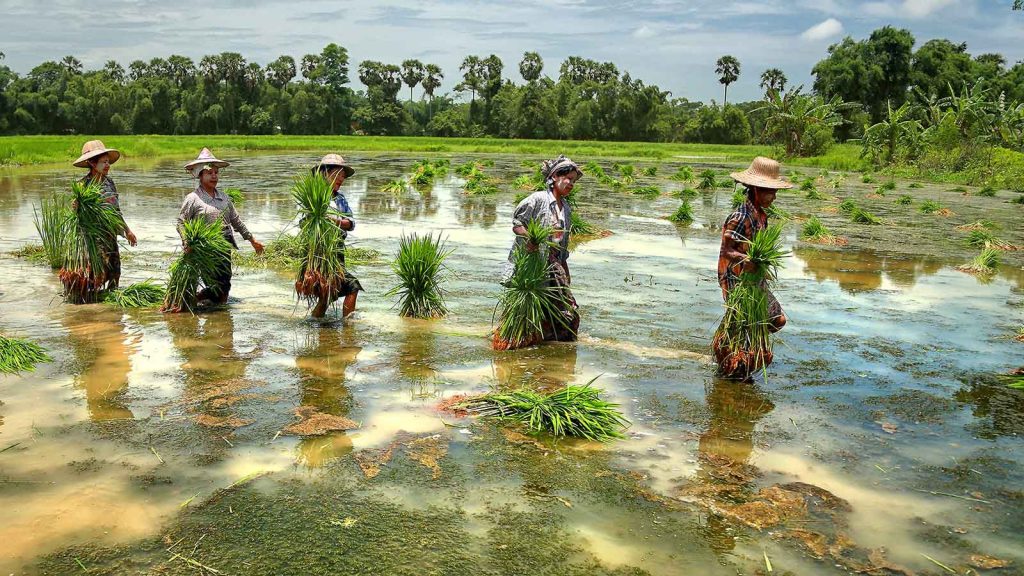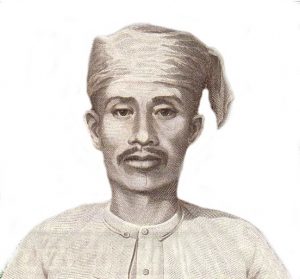Maha Saddhamma Jotika Dhaja, Sithu Dr. Khin Maung Nyunt
The Peasant Revolution led by Saya San did not take place on March 2nd. March 2nd 1962 was the day and date of General Ney Win’s military coup of the State when he personally announced on Myanmar Radio that he had taken over the reign of the State from the Pyidaungsu Government headed by Prime Minister U Nu on the ground that the entire nation was on the brink of break-up and disintegration. The National Army of the Country was duty-bound to salvage it in time. He did not want to commemorate the date of that coup because the coup was a timely action. He thought that the Peasant Revolution was historically worthy of commemoration. So he made that date of March 2nd as Commemoration Day of the Peasants Revolution.
Does history repeat and react? No absolute affirmative or negative answer can be given. Time, place and circumstances are three major factors to make history either to repeat or re-act, and in its repetition and reaction, only similarities, not identities are found.
In the short interregnum of the two World Wars —World War 1 of 1914-1918 and s-4, World War 2 of 1939-1945, un expected forces and circumstances cropped up by leaps and bounds. Among them the Economic Depression was the first and foremost. The Wall Street in the US, the economic nerve of the world, suddenly collapsed and stocks and shares became mere scraps of papers to be burned. Many companies and shareholders were reduced to bankruptcy. The evil effect speedily spread to the entire world.

Myanmar, a colony in the British Empire was no exception to escape. In the economic heydays of British Colonial Rule, Myanmar as a colony enjoyed economic boom. Especially after the opening of the Suez Canal, Myanmar’s agriculture products, paddy being the staple crop wealth flew into Myanmar, but not to Myanmar people or peasants to the British capitalists and their Indian under dogs brokers and money lenders, who had been exploiting Myanmar peasants for years. Mortgaged paddy bands and farm cattle were confiscated on failure of returning borrowed money even young daughters were taken any by force. The British Colonial Government turned a deaf ear to such public distresses.
About this time Myanmar educated middle class had formed a nationalist organization ’’General Council of Burma Association” on the model of Young men Christian Association. Saya San, a herbalist from the Thayawady District was an active member of G.C.B.A. He was sent to his native place to study and report the real situation of the stress of the peasants. After a thorough enquiring, he returned and made a full-fledged report of his eye witness account with a strong suggestion for armed uprising against the British Colonial Government.
What had happened was that the wheel of four forces, economic depression, economic recession, economic reaction and revolution had turned a full circle. Myanmar agricultural products, mainly paddy lost market, no money from sale no one took. They had to be burnt. But the prices of imports went up while textile, machines, consumers’ goods were skyrocketed. In addition to money lender Chatters debts Myanmar peasants were unable to return the money they owed to Chinese retailers for consumers goods. Head over heels in debt the peasants had no money to return debt and no place to live because their lands households were confiscated. ပေးစရာလည်း ငွေမရှိ၊ ပြေးစရာလည်းမြေမရှိ။
So what was the only way out? Armed uprising. Saya San was an alchemist. He was noted to have concocted a mercury compound ball [philosopher’s stone] by which you could be immune from all weapons.
According to Myanmar traditional cosmology and mythology, the westerns were presented by dragon. To catch and kill the dragon, the mythical powerful garud bird “Galone” in Burmese was chosen as the symbol charm and a amulet Saya San assumed the title of Supanaka Garuda Raja” and ceremonially crowned as King of Myanmar, successor to the throne of King Thibaw of Mandalay Yadanapone Nay Pyidaw. He & his wife “King & Queen” were ceremonially crowned. This news spread across the country and the entire Myanmar people believed and heartily welcome it. The British Colonial Government shrugged its shoulders as “a storm in the tea cup”.
But when Saya San’s garuda soldiers raided in day time police and sentry outposts and killed armed officers, alarm was raised. They thought that the risings could be dealt with in no time. British police and British Indian soldiers shadowed Saya San to catch him alive. But Saya San escaped miraculously. People believed that Saya San could turn himself into an invisible man by his magic power.
He disappeared under eyes of British police and soldiers in the Temple of Mandalay Maha Muni Buddha Image. After nearly 2 years of his hidings in the Shan State his trusted men betrayed him by keeping all his chasm and amulets from his body while he was in a sleep and handed him over to the police. It was said that the British Government had to bring in sepoys [mounted silks soldiers] to capture Saya San.
Saya San’s trial was big international news across the world. Not only world media but also many interested historians, writers and biographers came to witness his trial Saya San out rightly denied he was a rebel. He said firmly that he was a law abiding British citizen. He only made attempt to salvage the peasants from the whirlpool of debt, distress and devastation as there was no one to help them. When he was about to be hanged, he was said to have yell out “I bravely stand this unjust punishment. In my next existences after my death may I succeed in my fight for freedom of the peasants and my country”.
General Ney Win was right in naming the day of his military coup 2 March 1962 as the Peasants Day. We now need to build a commemorative monument of Saya San Statue at an appropriate place where we can hold annual commemorative the Saya San’s Peasants’ Revolution.


